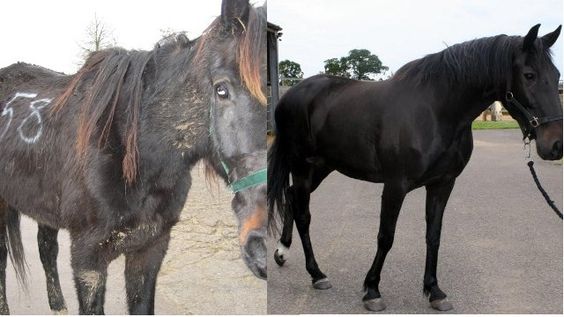Race Horse Abandonment & Abuse
The horse racing industry promotes an untrue image of what happens to retired race horses. They like people to think that horses live a happy retirement as pets, stud horses or well looked after at riding schools.
In reality, the vast majority of retired racing horses, or racehorses that do not make the grade, are put through the agony and terror of being slaughtered for the foreign horse meat industry or for pet food. During the slaughter process, these sensitive animals often thrash around trying to avoid the bolt gun and blades, resulting in them regularly going through horrific agony process alive and conscious.
Tens of thousands of ex race horses in the US alone are sent to slaughter houses every year.
It happens in most other countries too, as does the live export of the horses to countries with little or no animal welfare standards, where they are slaughtered in often extremely inhumane ways.
Other retired, injured or ungraded race horses are often inhumanely killed in other ways because they are no longer wanted. Many are abused, abandoned, or neglected until they die.
This happens all over the world. In a study conducted it was found that in any country that there is a thoroughbred horse industry, race horse abuse was present.
Race horses which once blazed race courses earning fortunes for their owners are discarded or disposed of when no longer of use. Many are locked away where nobody knows about them, neglected, forgotten by the world and slowly starving to death. Injured horses are killed and their bodies dumped.
The lucky ones are rescued by animal sanctuaries who have room for them, but most are not that lucky.
Image: An example of race horse abuse. The ex-race horse, The Spear Of Destiny, was starved to death by the owner. The owner then neglected and starved three more former race horses. Wellington SPCA trie to save them, but it was too late for one of them who suffered multiple organ failure. The other two were suffering from severe malnutrition, but were nursed back to health by Wellington SPCA. Source








